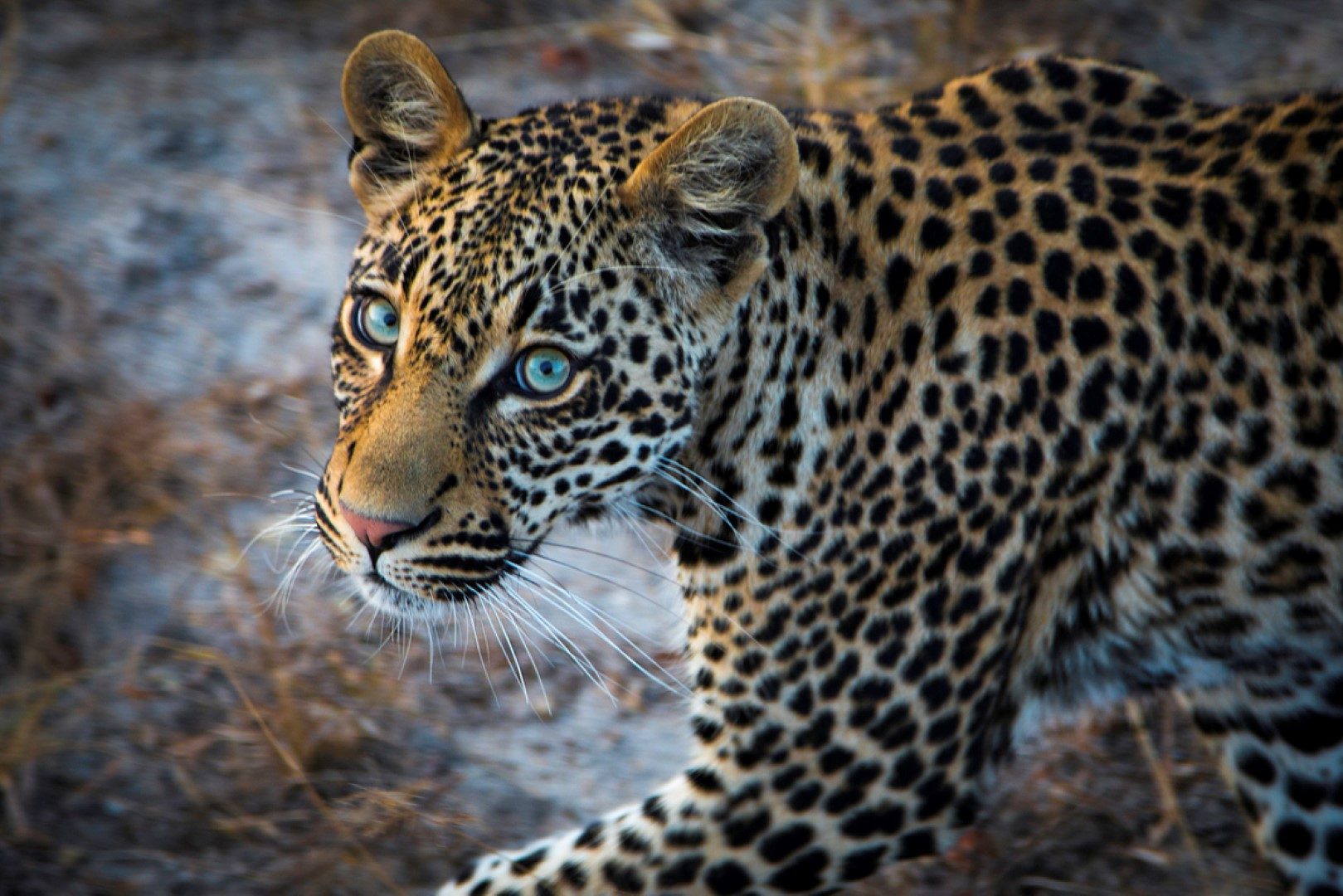We know how the leopard got its spots and we’re amazed at the cheetah’s reputation of being the fastest land mammal, but it can be challenging to identify who’s who in the African zoo when they share some similarities at first glance. To tally their likeness, both the cheetah and the leopard are members of the big cat family, have spotted, golden fur, are native to the African continent and both are formidable hunters. All that said, they are quite different in several ways.

For starters, one is a member of the prestigious Big 5 club while the other can go from 0 to 100km/h in just 3 seconds. Impressive cats, right? Whether watching wildlife videos or gazing across the African savannah, ‘spotting’ the difference is pretty easy when you have a few basic facts.
Face Value
At closer (but safe) quarters, a number of physical features highlight the clear difference between the leopard and the cheetah.
In nature’s version of sunglasses, the cheetah has black “tear marks” from its eyes to the mouth, which helps to absorb the sun while it’s sprinting after prey at astonishing speeds. Ancestors forgot sunscreen and now leopards have freckled faces with prominent snouts. If you are able to make eye contact with either, you can spot the difference. Leopards typically have green or blue eyes while cheetahs tend to have brown eyes.


Catty Habits
Out in the African savannah, finding leopards requires looking up at trees where they spend most of the day straddling broad branches. This seemingly lounging lifestyle should not fool you – leopards are blessed with robust and powerful bodies that can lift a fallen prey as heavy as a baby giraffe into higher branches. The enviable coat is covered in rosette-shaped spots, as if finger painted joyfully by a child. At the end, is a rounded tail with the same spotted pattern. The leopard’s physical strength, retractable claws and dappled fur are suited for the leafy lifestyle.

The cheetah prefers the open ground of the savannah where it can swagger with spotty style through the long grass during the day, patiently waiting for prey to sprint after. It differs from the leopard with a lightweight body, flatter tail and non-retractable claws, which gears it for accurate navigation at top speed.
While humans have unique fingerprints, each cheetah has unique ringed patterns at the end of its tail. Despite its capacity for speed, the cheetah avoids hunting at night because of poor night vision. It’s unlikely we’ll see cheetahs with headlights strapped on anytime soon.

How They Sound
If these ferocious felines cannot be found, their unique “ringtone” calls can help identify these different cats. Their physical build creates their distinctive sounds. Cheetahs are unable to roar which makes them one of the big cats that do not have this ability. Instead, they “chirp” intermittent cries or purr loudly. This makes them sound more like the typical house cat but much, much louder. The leopard has a throaty roar softer than a lion’s and can sometimes resemble a saw gradually grating through wood.

Reproduction
The final difference is their reproductive patterns, which is an outcome of their stability in reaching adulthood. Cheetahs are vulnerable to wildlife and man-made threats and have more frequent litters of 4 to 6 cubs a time. Only a few cheetah cubs reach adulthood and so these big cats are endangered. The secure leopard faces few threats and has 2 to 3 cubs per litter. While our tree-hugging leopards are facing habitat loss in most parts of the world, they’re on the high alert list.


Cheetahs and leopards have their differences thanks to the remarkable biodiversity of their habitats. The trees allow leopards keep their feast away from scavengers and to take plentiful rests during the day. Cheetahs take advantage of the daytime to safely hunt while most predators are snoozing. Both contribute to their ecosystems and balance the circle of life.
Where to see leopards and cheetahs in Africa?
There are many beautiful places to see leopard and cheetah on safari where passionate experts will give you the best to offer.
Here are the top places to visit:
- Okonjima Nature Reserve in Namibia
- Londolozi Private Game Reserve in South Africa
- Okavango Delta in Botswana
Personal Encounters With Cheetahs:
- Samara Private Game Reserve in South Africa
- MalaMala Game Reserve in South Africa
- Kambaku Private Game Reserve in South Africa
The leopard isn’t native to Africa
Hello Gavin, thank you for your pointer. The leopard is found in many different habitats in Africa and Asia. Perhaps I should clarify that this article refers to the subspecies, African leopards (Panthera pardus pardus). Thank you 🙂
This issue helps you enhance cognitive power at
all times.